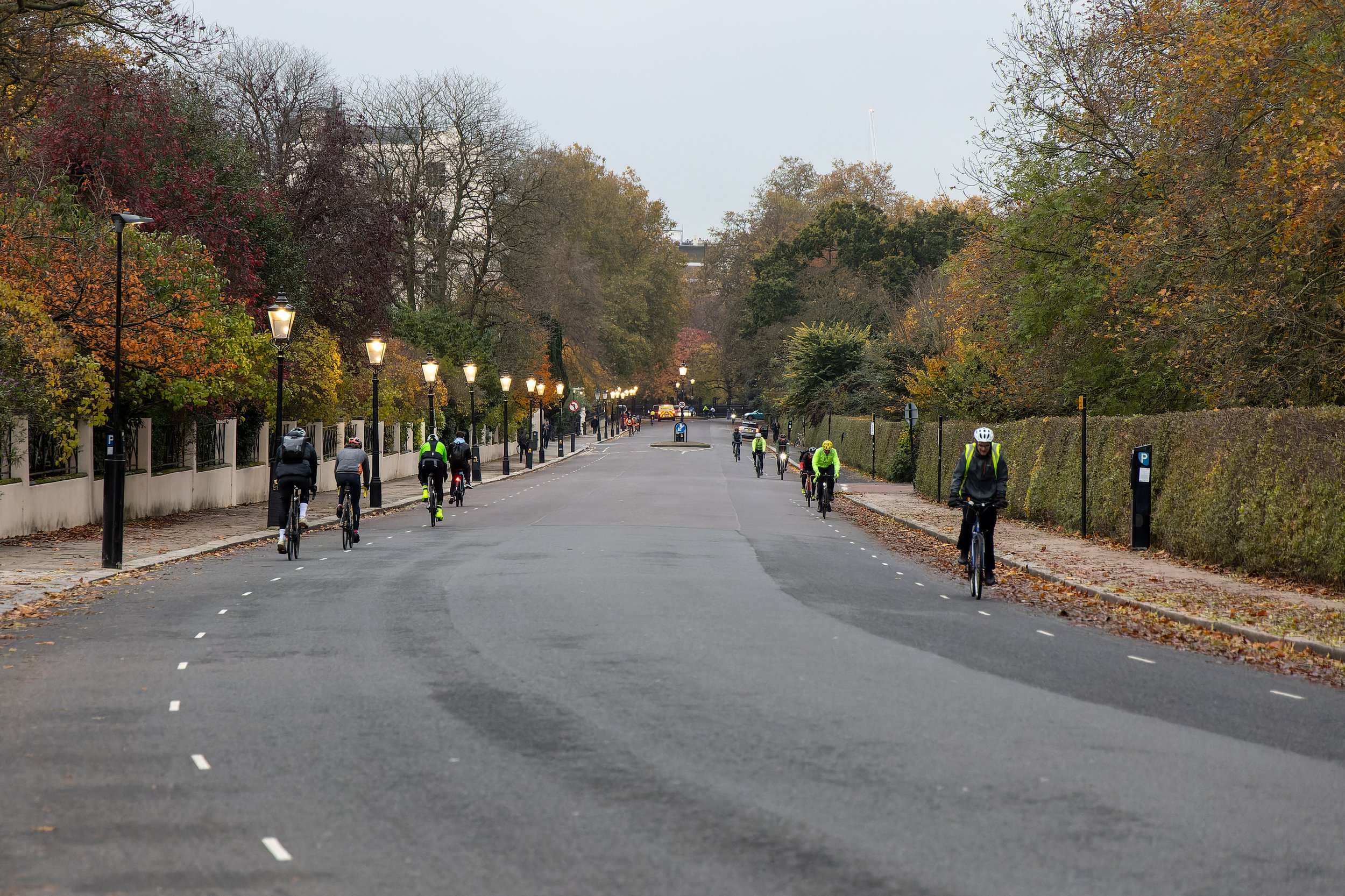
Regent’s Park rider guide
Being able to ride our bikes in glorious surroundings of The Regent’s Park is a real privilege.
A commitment to the following guide will give us a greater chance of holding on to this precious and unique open space. This guide is not intended to set out rigid rules and regulations - it is simply a guide for cyclists who enjoy using the park.
The Park is a shared facility and by recognising where we can ease tensions we hope to improve the environment for all.
This guide was written to be applicable to all cycle users of the park.
Be considerate, be kind and be courteous.
STOP AT RED LIGHTS
Running red lights is illegal, dangerous, and a major contributor to negative perceptions of those who ride in the Park.
RIDE AT A SPEED APPROPRIATE TO THE TIME OF DAY
The Regent’s Park is the best freely-accessible location for training near central London. However, it is also mixed-use and can be very busy. Consider training outside peak times and London Zoo opening hours to minimise risks to yourself and others.
OBSERVE AND INTERACT WITH OTHER ROAD USERS
Treat all road users, including pedestrians and drivers, with respect. Check and signal before moving across the road and don’t be afraid to use your voice to communicate with other cyclists.
PAY ATTENTION TO YOUR SURROUNDINGS, ESPECIALLY PARKED CARS
The primary cause of serious accidents involving cyclists in the park comes from doors being opened into the path of a rider, or a rider with their head down cycling into the back of a parked vehicle.
IF IT’S DARK
Make yourself seen with lights, reflectors and reflective materials on your clothing. The lighting in the park is lower than on other roads across London and as such comes with increased danger of not being seen during hours of darkness.
TIME TRIAL BIKES
Time Trial bikes can increase speed and slow the ability to take evasive action if required, so consider training in this manner during quieter times to reduce risk. Carefully consider the increased risks associated with riding behind (drafting) other riders if either you or they are in the extensions/TT bars.
BE AN AGENT OF CHANGE
Raising awareness of the issues we face through a gentle word to a fellow cyclist could make a real difference and change behaviour that is negatively perceived.
CYCLING CLUBS AND CYCLING IN GROUPS
Riders in club kit are among the most visible users of the park. As a well-organised and recognisable group, club riders have an opportunity to set the tone for other park users.
With that in mind, you may wish to consider:
Where possible do not ride with more than 2 riders side-by-side; this makes it difficult for other cyclists and vehicles to pass.
When the park is open to traffic, try to limit groups to 6 riders in length: either 6 riders in a single pace line or 12 in a rotating line.
Treat other road users with care and respect. Err on the side of caution, and consider the impact of up to 12 riders passing slower cyclists.
If you’re riding in formation, stop in formation too. Don’t swarm around other road users at red lights, whether they’re in vehicles or on bicycles.
Communicate with your own and other groups: use hand signals and your voice to warn of hazards and road conditions.
If your club welcomes newer or less experienced riders, please consider introductory training to group riding.
You should always attempt to stop on amber if at the front of a group, since it can result in a number of riders behind passing through red if they follow.
